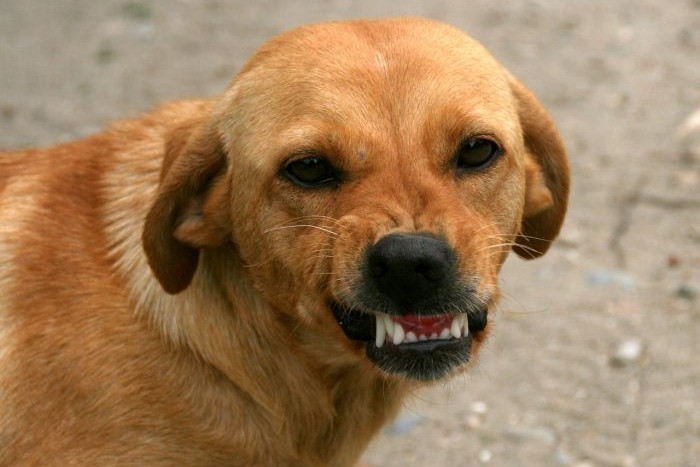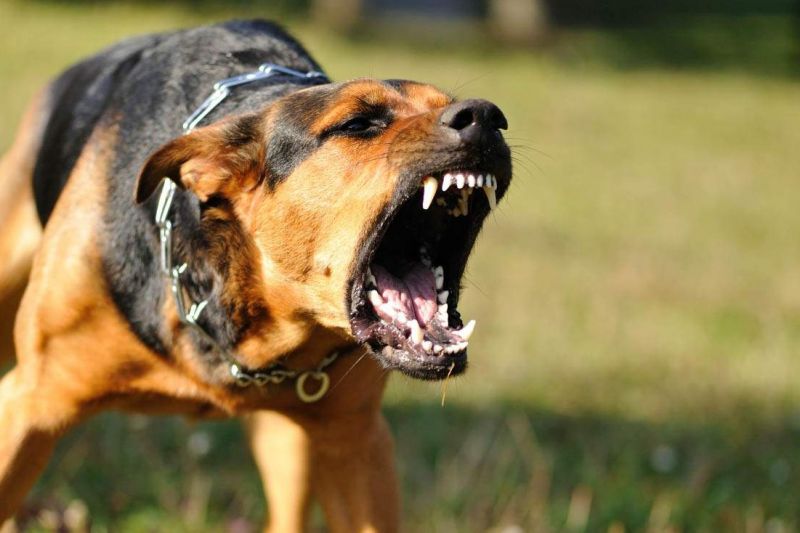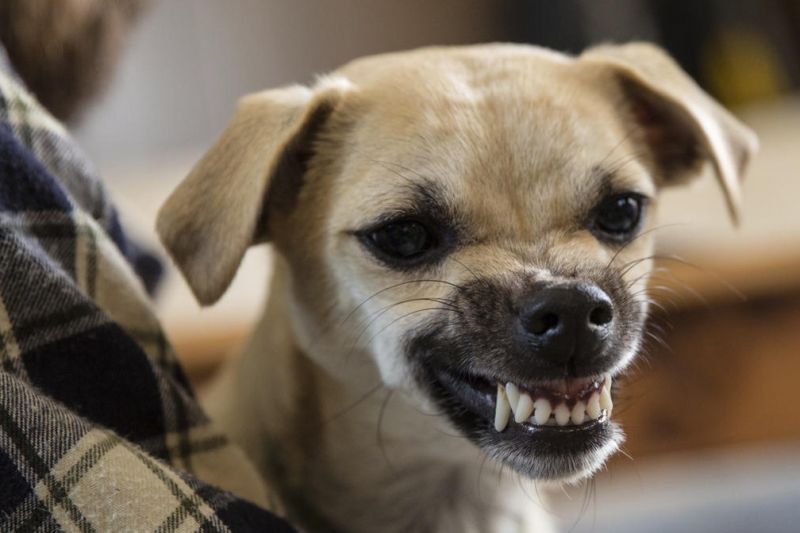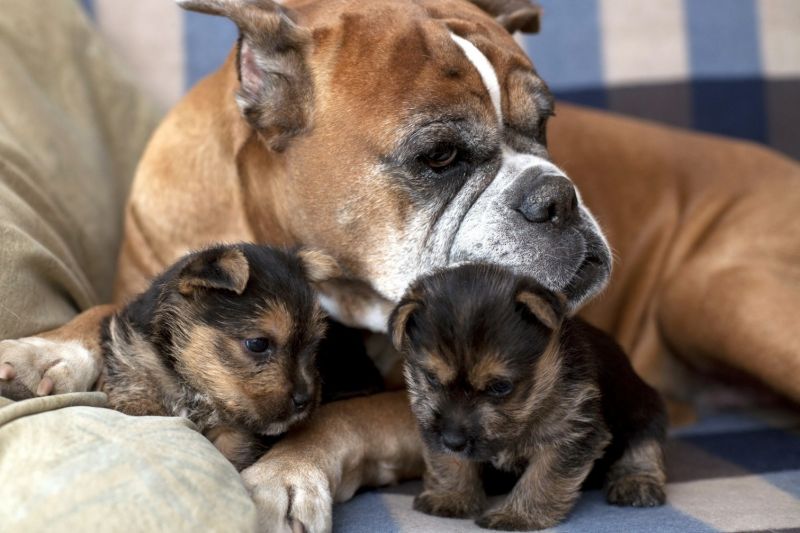A dog may exhibit aggression due to a genetic predisposition: for example, if the breeder made a mistake in breeding and received a litter with mental disorders. However, such cases are quite rare. Most often, the dog becomes aggressive through the fault of people who incorrectly raise it and do not stop the rudiments of anger, but, on the contrary, reinforce it. Let's figure out how to prevent these errors.
The main causes of aggression in dogs
The dog does not become aggressive in one day. Often this is a consequence of the improper upbringing of the pet for some period.
Provoke aggression can be such factors as:
insufficient socialization (when the dog from childhood was not taught to communicate with people and relatives);
excessive and incorrect punishments, as well as unjustified and inappropriate praise;
aggressive dog attacks and child molestation;
lack of movement, physical and mental stress.
Depending on the causes and circumstances in which anger is manifested, various types of aggression in dogs are distinguished.
Aggression domination

This behavior is most often inherent in males during the period of social maturity (from 18 to 36 months), but sometimes it can also occur in bitches (from the first estrus to two years). It is noteworthy that with punishment such aggression intensifies.
It is a mistake to believe that only large service pets are prone to aggression of dominance. In fact, small and cocky terriers and chihuahuas are much more likely to sit on the owner’s neck and bite all the people who are trying to stop it. What to do about it?
In order to avoid further problems, from a young age the puppy needs to be explained who is the boss in the house without using brute force (so-called alpha coups, newspaper hits, etc.). You should not be too strict with him. Often it is enough to slightly change the intonation in the voice, and the dog will understand what can be done and what cannot. In education, consistency is important. For example, one member of the family should not allow the animal to sleep on the bed, and the other should not.
Territorial

Some pets violently defend their territory (sleeping place, apartment, house, car). Absolutely ill-mannered at the exit from the entrance of a multi-storey building, they bark at everyone they meet on their way. Thus, the pet “says” that this is her possession. If the boundaries of the territory are clearly defined (for example, the dog lives in an aviary), territorial aggression is more pronounced.
The rudiments of unwanted aggressive behavior are immediately suppressed by the commands “No” and “Fu!”. If you want the dog to guard the territory (for example, a section of a private house), teach him to do it at the command of “Alien” or “Guard”. If you want to get a serious defender for your family and home, entrust the pet to a professional dog handler who will help you to develop protective qualities correctly.
Proprietary
A pet can protect not only the territory, but also its resources (toys, a bowl and even the owner) from other people or relatives. In some pets possessive aggression is more pronounced, in others less. If you notice that your dog is prone to viciously defend some things, take action.
Your task is to explain that the toys and the bowl do not belong to him, but to you. Start and end the game not when your pet asks, but when you want it. And it’s better to do it when interest has not yet begun to fade.
In no case do not try to pick up a bowl from a pet the moment he eats. If the dog growls, and you punish her for it, it will be almost impossible to correct the situation.
So that the dog does not protect his food from you, while feeding, try throwing a piece of very tasty and aromatic food into the bowl, as if you decided to give more food than usual. Perform this maneuver over the next few days, only with each time reach out your hand with a tidbit closer and closer to the bowl.
So the pet will understand that you want not to take food from him, but to put an additive. Then he will gladly give you his bowl.
Aggression of fear (defensive behavior)

Unsure dogs often have an angry, cowardly reaction. They are able to be frightened of anything: people, animals, unfamiliar objects, places, circumstances. Fear encourages either to flee or to defend.
Most often, at the initial stage, the dog demonstrates a pose of submission (he lowers and turns his head, tightens his tail, squats slightly and bends his back in an arc, lies down and opens his stomach), and if these so-called signals of reconciliation (reassurance) are ignored, the pet may bite from fear .
Even in early childhood, begin to socialize the puppy (at 4-5 months). Gradually accustom to unfamiliar areas, public transport, crowds, large objects, etc. If the dog does not feel fear, reinforce this behavior with a treat and praise. Punishment increases the aggression of fear, so bring up a coward only on positive reinforcement without the use of physical force.
Hunting, or predatory
Most often manifested in the pursuit of cats, hares, birds, cars, cyclists, running people, etc. and the desire to grab the victim. By their nature, canids are predators, so the hunting instinct can wake up even among decorative breeds.
Again, do not forget about socialization. Take a walk in the park, where people run and cyclists ride, just first do not get close to them, but watch the reaction of the four-legged friend. If he does not pay attention to potential victims, gradually approach these objects. It is also important to train your pet in the basic Stand and Come To Me commands.
Game
During games, dogs simulate situations in real life. Puppies learn to establish hierarchical relationships with relatives, learn sexual behavior, hone their hunting, defense and attack skills. If a pet kicks while playing with a relative and bites it, this is normal. But if he attacks your arms and legs, pulls on clothes, such behavior is better to stop. This does not mean that the dog is very angry, but this bad habit can cause discomfort to all family members.
Do not let the puppy grab your hands, feet and clothes. As soon as he tries to play, slip a toy for him (a grip, a rope or any other thing to play “banners”) and praise him when he starts wagging the subject you are offering.
Maternal

Lactating bitches have aggression when protecting offspring and during a false pregnancy, when the female protects the toys collected in a bunch, acting for her as puppies. Typically, this behavior disappears when the mother stops feeding her children. And if she trusts the owners, then she does not behave aggressively towards them. Here again, it is all about building the right relationships.
Sexual
Mature males can compete with each other, especially in the presence of a flowing female. Usually they exchange demonstration postures and find a compromise themselves. It is better not to interfere in their relations, of course, if the showdown has not turned into a serious fight.
As you can see, "a dog is a bite only from a dog’s life." The owner’s task is to provide life for four-legged friend in comfortable conditions, to properly educate and socialize. Then aggressive behavior will not need to be fought.
 Select language
Select language 





.jpg)
.jpg)
.jpg)
.png)
